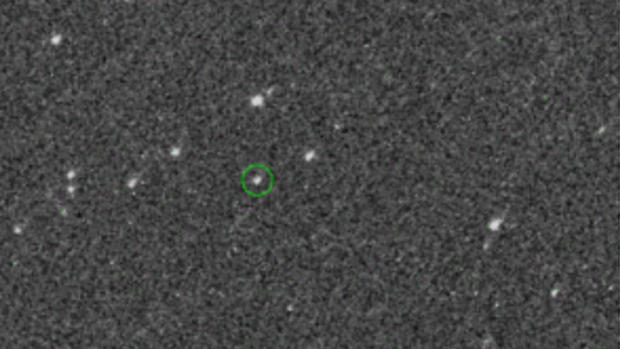NASA On Mission To Bring Piece Of Asteroid Back To Earth
Follow CBSMIAMI.COM: Facebook | Twitter
MIAMI (CBSMiami) -- In what sounds like something right out of a sci-fi movie, NASA scientists are preparing to land a spacecraft on an asteroid. It is the first attempt to bring a piece of an asteroid back to Earth for research into the beginnings of our universe and the origin of life.
The asteroid is called Bennu.
"This is a golden age for planetary exploration. Missions like this will bring in an enormous amount of new information that really is going to tell us about the origin and evolution of life," explained NASA Chief Scientist James Green.
NASA's OSIRIS-REx spacecraft launched two years ago and will reach the asteroid in December.
Its mission is to get close enough to briefly touch Bennu's surface and collect dust and soil samples, before flying back to Earth.
Green says those samples could unlock the secrets of our planet's beginnings.
"This mission is all about finding materials, objects like this, fit in with the origin of the earth and potentially how it may have started life here on earth," said Green.
Scientists also believe Bennu, which predates Earth, could have traces of water on it.
The size, which is about five football fields long, combined with Bennu's proximity to Earth, is why scientists also want to know if it could eventually endanger our planet.
"By studying it and seeing how it orbits the sun, that will be our clue as to how this asteroid will evolve over time and whether will become a hazard or not," explained Green.
After arrival at Bennu, the spacecraft will spend the first month performing flybys of Bennu's north pole, equator and south pole, at distances ranging between 11.8 and 4.4 miles from the asteroid. Bennu is the smallest object that any spacecraft has ever orbited.
OSIRIS-Rex will extensively survey the asteroid before a specially designed robotic arm is used to collect the samples in July 2020, but the asteroid samples won't make it back to Earth until September 2023.
Next week, another asteroid is expected to pass close to Earth.
It's known as asteroid 2016 NF23 and NASA does consider this asteroid a near-Earth object (NEO).
It's passing by Earth on Aug. 29. and while NASA has labeled it a potentially hazardous asteroid due to its size and distance from the Earth, there's no need to panic, it does not pose a threat to our planet.
It's projected to pass by at about 13 lunar distances, which works out to over 3 million miles.




